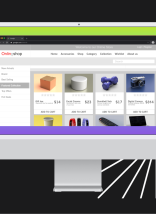Magento 2.3 released November 2018, providing a wealth of new functionalities and improved experience for both Open Source and Commerce editions. Just a few new features include Progressive Web App, GraphQL as an alternative API endpoint, and Multi-Source Inventory.
So with all these enhancements, why are people still hesitant to upgrade to 2.3 in 2020?
Why are people hesitant to upgrade?
It takes careful planning and resources to make changes.
Upgrading to new versions should always be done with caution and careful QA. Developers will need to ensure the version installs correctly and works within your design and customizations. You will also need to check that all third-party extensions are compatible with the new version.
New updates can bring new problems.
When first released, Magento 2.3 users were experiencing a high volume of bugs. Fortunately, at this point many of the common bugs already have solutions. MageHost compiled a list of the top issues found in forums, offering fixes for each.
Here are some of the top bugs (and solutions) mentioned:
- External Request, Invalid Form Key Magento 2.3
- Magento 2.3 issue on the local server
- Magento 2.3 technical issue with the server while uploading files
- Upgrade from Magento 2.2.x to Magento 2.3.0 issue
- Magento 2.3 composer upgrade fail
Why should I upgrade, and what new features are included?
Aside from new features, upgrading to newer versions of Magento will keep your eCommerce store secure and well-supported.
Magento 1 is reaching end of life.
Magento announced that support for Magento Commerce 1 (Enterprise Edition) will end in June of 2020. Additionally, security patches for Magento Open Source (Community Edition) will only be released through June 2020.
The Magento 2 community is growing rapidly.
With Magento 2.3’s release in 2018, Magento also mentioned there were over 2,000 available extensions, 30,000 existing Magento 2 sites, and over 8,000 launching quarterly.
With more websites upgrading, it’s easier than ever to access support within the community and find solutions to any problems you may face.
Don’t miss out on new features essential to eCommerce success.
While Magento gives a full breakdown of its new features, we’ve outlined nine features and how they will improve your eCommerce store.
- Multi-Source Inventory: MSI improves operational efficiency when inventory is stored in multiple physical locations. With MSI, merchants can manage inventory via one central admin, assign products to each fulfillment source, easily track this inventory, and automatically control which fulfillment sources are used based on rules.
- PWA Studio: With Progressive Web Apps, mobile commerce is high-performance, SEO-friendly, and reliable. According to Magento, PWAs have already been proven to increase conversion rates by 50%.
- GraphQL: As an alternative to API endpoints, GraphQL will allow developers to query exactly the data they need using fewer API requests.
- Page Builder: Developers are no longer needed to make simple CSS and HML updates. Page Builder includes a drag-and-drop interface, dynamic content throughout the website, and the ability to preview and schedule content.
- Magento Shipping: Magento 2.3 includes support for new fulfillment options and increased availability globally.
- Enhanced security: How secure is your store? Protect private data and login information with Google ReCAPTCHA and Two Factor Authentication.
- Asynchronous & Bulk Web APIs: Boost performance by making API calls without waiting for previous operations to complete.
- Declarative schema: Reduce redundant operations and make installation easier than ever before. Developers can rely on the system to automatically make database adjustments.
- Improved indexing performance: Re-indexing times are reduced by more than 60% to support large sites with large volumes of products to update.
Need help planning your Magento upgrade?
Upgrading to Magento 2.3 will empower you to take advantage of all of Magento’s new features and boost operational efficiency.
Whether you are interested in building a new eCommerce application, need help with third-party integrations, or would like to upgrade to a new version of Magento; our team is happy to help you get started. Contact us to learn more about your options.










